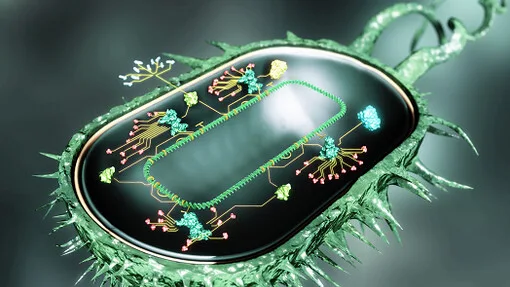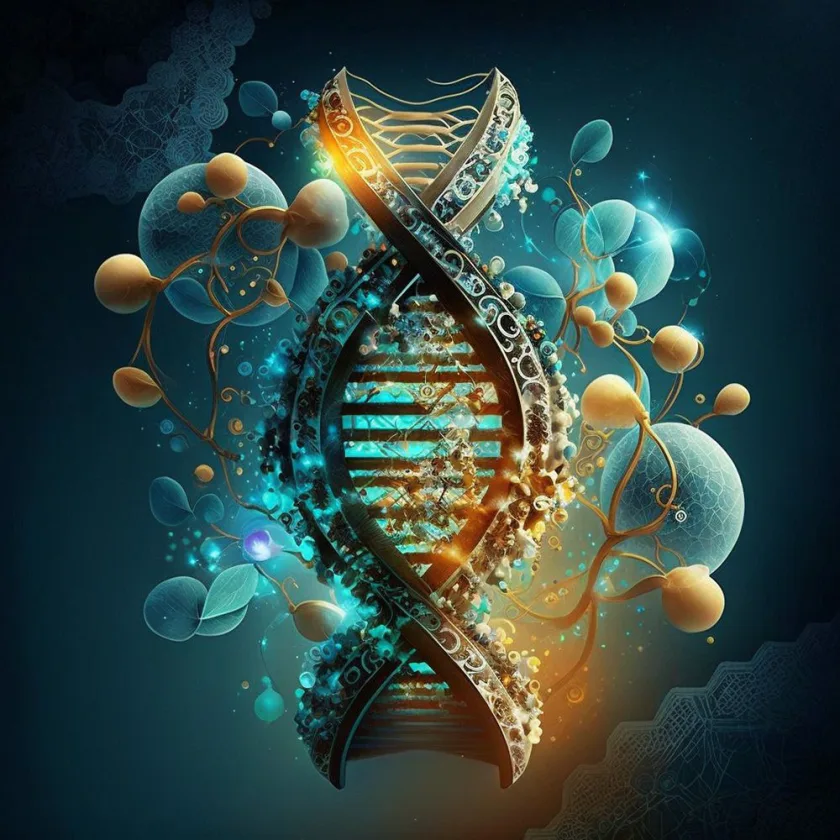
Genomes come in various levels of complexity. Of course, it also depends on the number of genes an organism possesses.
A genome is set of genetic material or DNA (deoxyribonucleic acid) present in a living entity. It contains all the instructions necessary for an organism’s development, functioning, and reproduction.
Not all living entities have equal number of genomes. Some bacteria, for instance, have very few genes, while plant and animal genomes can have tens of thousands.
The simplest organism would have the minimum number of genes needed for survival and reproduction in a specific environment. Mutations in such an organism could be detrimental, affecting its cellular functions.
Essential proteins change slowly compared to non-essential ones, indicating constraints on evolution. These proteins are often involved in fundamental functions such as DNA replication, protein synthesis, cellular signaling, energy production, and maintaining the structural integrity of cells.
When a genome has been streamlined or simplified by removing non-essential genetic elements, there are fewer genes or genetic variations available for natural selection to act upon in a positive manner. Thus, organisms with streamlined genomes have limited opportunities for adaptation.
Smallest cell through synthetic biology
Cells are the basic functional units of life, but even unicellular organisms with fewer genes are complex and not fully understood.
Scientists have been trying to find the simplest organism with the help of synthetic biology, which involves redesigning or constructing biological parts. It allows the creation of simplified models by removing non-essential sequences from a genome.
Minimal organism for evolutionary studies
Recently, researchers at Indiana University have successfully constructed a minimal cell with the smallest set of genes necessary for independent cellular life.
To understand how a minimal cell evolves, experiments were conducted using strains of a bacteria called M. mycoides.
The minimal cell (JCVI-syn3B) has a synthetically created genome with a subset of genes from a non-minimal strain (JCVI-syn1.0). By reducing the number of genes from 901 to 493, JCVI-syn3B has the smallest known genome that can grow in a laboratory setting.
The experiments aimed to determine if streamlining the genome affected the rate and types of new mutations compared to the non-minimal organism under relaxed selection conditions.
Additionally, scientists studied how making genomes smaller affected how quickly and in what ways organisms evolved in response to natural selection.
They did this by examining the entire set of genes in the genome, estimating the overall fitness of the population, and observing any changes in the size of cells.

The journey of minimal organisms
Intrigued by the possibilities on evolutionary scales, a team led by Lennon at Indiana University turned their attention to M. mycoides JCVI-syn3B.
This minimal cell, with its carefully crafted genome containing the bare minimum genes required for life, was able to grow and divide in laboratory conditions.
Since, the researchers wanted to seek questions like:
- How would this simplified organism fare in the face of evolutionary forces?
- How would it cope with limited raw materials available for natural selection to work with?
- What mysteries lay hidden in the uncharted territory of new mutations?
Lennon, the lead scientist, emphasized that with the precise and essentially customized genome of M. mycoides JCVI-syn3B, there seems to be no room for genetic mutations that could potentially drive evolution.
However, to their surprise, they discovered M. mycoides JCVI-syn3B actually has an incredibly high rate of mutation.
They further allowed the organism to freely evolve in the lab for an impressive span of 300 days. Which also corresponds to around 2,000 generations of bacteria or a staggering 40,000 years in human terms.
In the next phase, the scientists devised tests to compare the performance of the evolved minimal cells to the original non-minimal M. mycoides and a group of minimal cells that had not undergone the 300-day evolution.
They pitted equal amounts of the different strains together in a test tube, observing which strain thrived and became dominant due to its superior adaptation to the environment.
Unleashing evolution’s power
Afterpitting the non-minimal version of the bacterium against the unevolved minimal version for about 300 days, the researchers made a fascinating discovery.
They concluded that minimal bacterium exhibited a remarkable recovery. It regained all the fitness it had lost during the process of genome streamlining.
They pinpointed specific genes that experienced the most significant alterations. Among these genes, some played crucial roles in constructing the cell’s surface, while the functions of others remained a tantalizing mystery, waiting to be unravelled by further investigation.

Takeaway
The discoveries made by Lennon and his team hold tremendous significance for various fundamental biological enigmas.
These findings have far-reaching implications, ranging from tackling clinical pathogens and understanding endosymbionts that thrive within host organisms to refining engineered microorganisms and unraveling the origins of life itself.
In essence, this research unveils the awe-inspiring truth that life, in all its ingenious forms, possesses an innate ability to find a way to conquer challenges and flourish in even the most minimalistic settings.
Via: Indiana University



